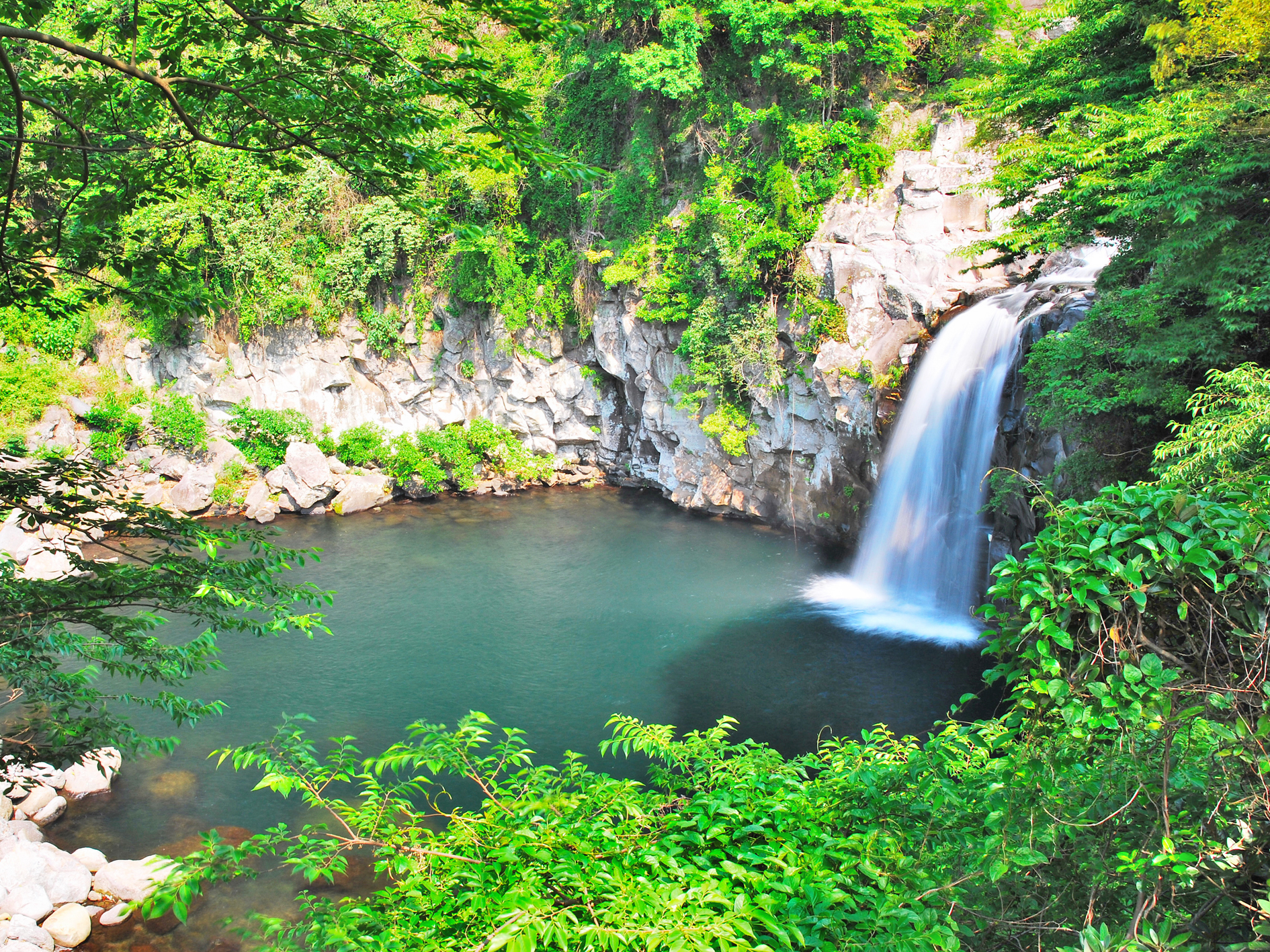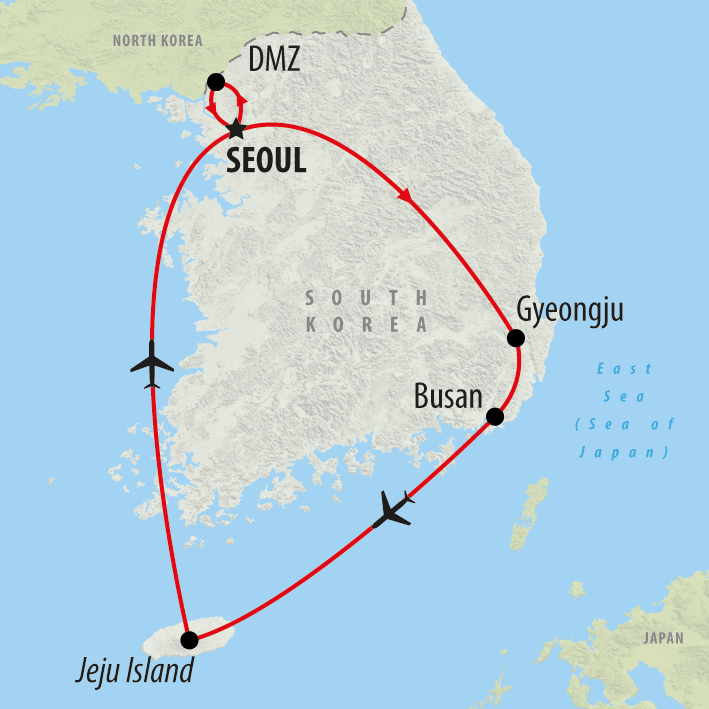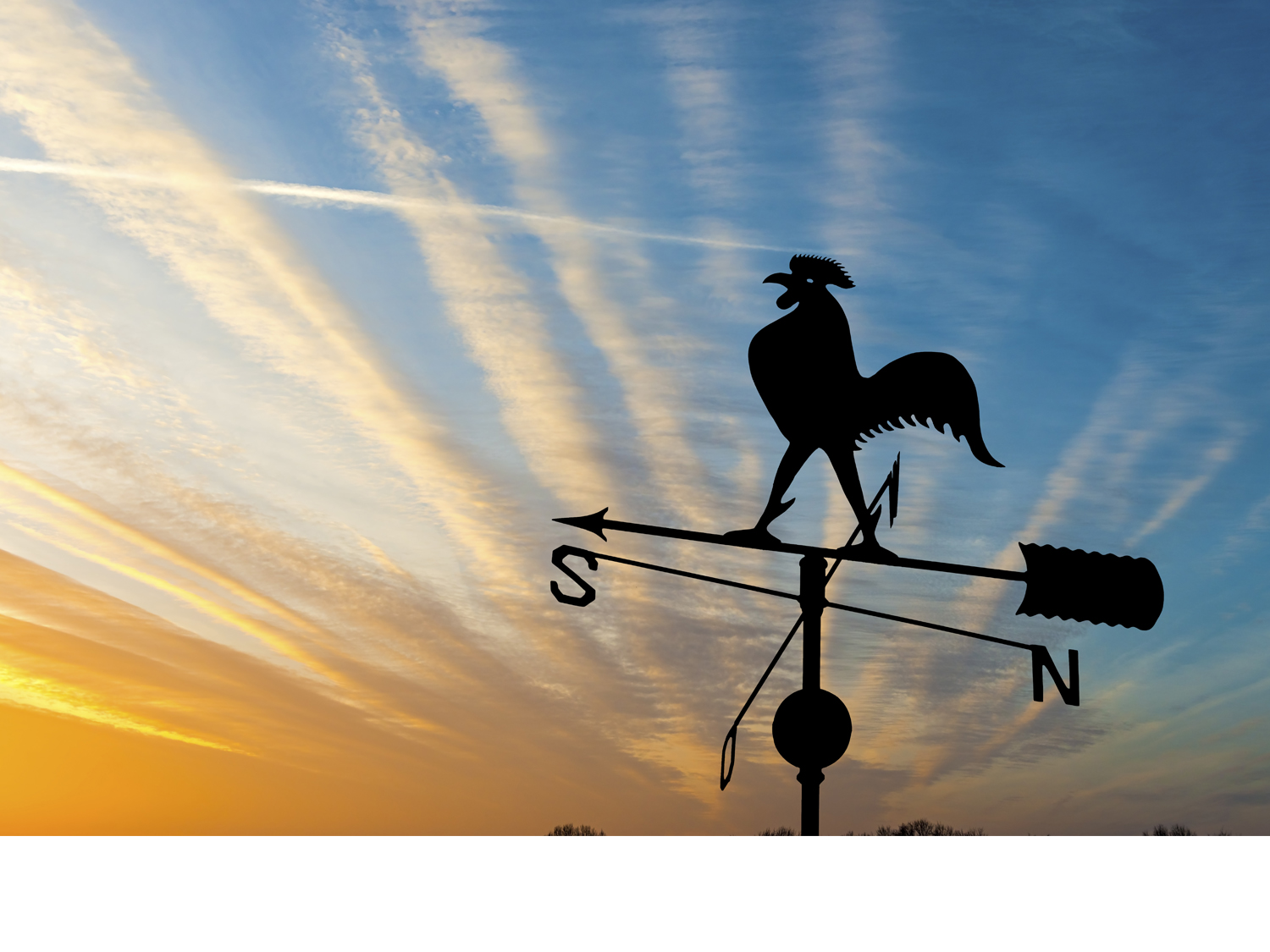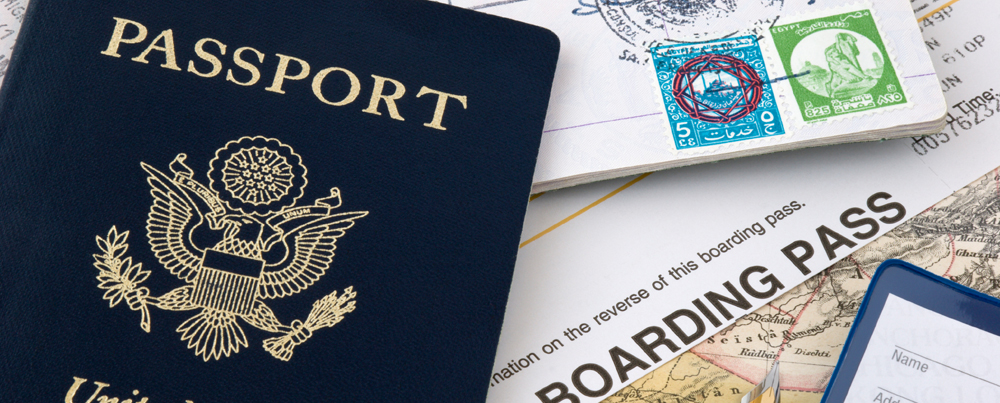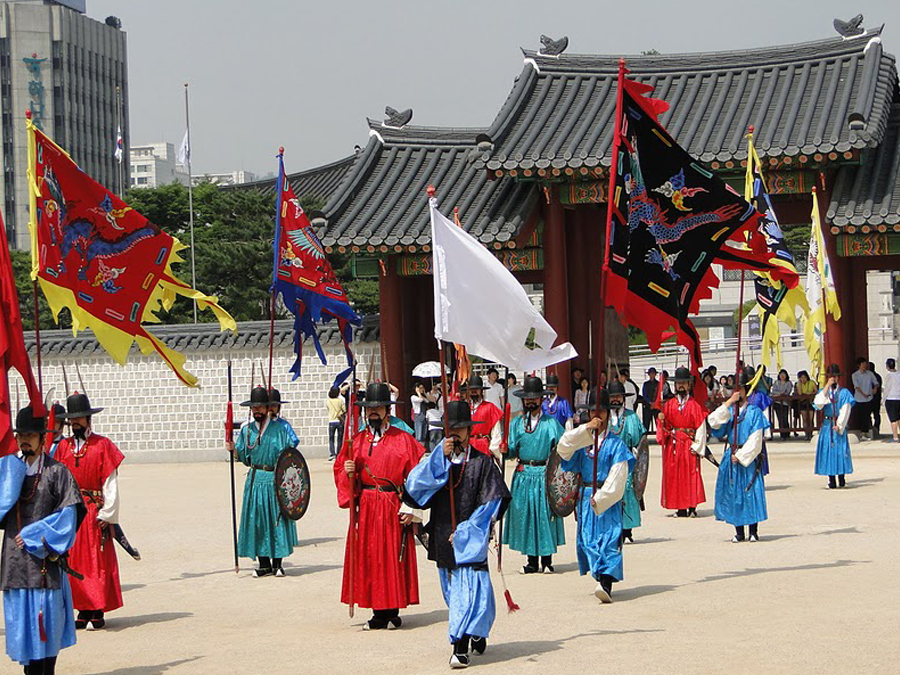Best guided tours to Mount Hallasan, South KoreaExplore Mount Hallasan: Guided Tours for an Unforgettable Adventure
When do you want to go?
2024
I'm flexible
Passengers
Adults (18+)
Children (0 - 17)
Welcome to Mount Hallasan, South Korea
The Hallasan Mountain is a shield volcano on the South Korean Island of Jeju. It is the highest mountain in South Korean and can be seen from all over the island through the peak is often covered in clouds. The mountain is a popular feature of the Hallasan National Park, which was designated an UNESCO Biosphere Reserve in 2002. Due to the varying temperatures along the soaring mountainside, the mountain is famous for its vertical ecosystems of plants. A beacon of natural beauty, Mount Hallasan is not to be missed by anyone voyaging through South Korea.
The mountain itself is home to the older Buddhist temple on the island. Gwaneumsa, built during the Goryeo Dynasty (918-1392). It also contains a crater lake named Baengnokdam, meaning ‘white deer lake’. The name derives from a story concerning heavenly men who often descended from the heavens to play and mock the white deer. The scenery around the mountain is beautiful through all seasons and offers a number of hiking trails. Both the Gwaneumsa and Seongpanak trails will lead trekkers to the summit. Those keen enough to reach the top will be greeted with stunning views of the island and the South China Sea.
Guided tours to Mount Hallasan, South Korea
Guided tours to Mount Hallasan offer an enriching and well-organized way to explore South Korea’s highest peak, providing visitors with in-depth insights into the mountain’s unique geological features, diverse ecosystems, and cultural significance. These tours, often led by experienced local guides, typically include detailed explanations about the flora and fauna, the volcanic history of the mountains, and its place in Korean mythology and tradition. Participants can choose from various routes, such as the Seongpanak and Gwaneumsa trails, each offering a distinct perspective on the mountain’s landscapes. These tours ensure a safe and informative experience, allowing hikers of all levels to enjoy the breathtaking scenery and natural wonders of Hallasan, while also emphasising the importance of conservation and respect for this UNESCO Biosphere Reserve.
What to expect – Why visit Mount Hallasan, South Korea?
Spectacular Natural Beauty
Mount Hallasan offers a visual feast with its dramatic topography. The summit, at 1,947 metres, provides panoramic views of Jeju Island and, on clear days, even the distant mainland. The ascent reveals an ever-changing landscape, from the verdant forests at lower elevations to the stark, volcanic terrain near the top. The Baengnokdam crater lake, nestled at the summit, is a serene and picturesque spot, often reflected the sky and surrounding peaks. The mountain’s appearance transforms with the seasons: vibrant autumn colours, snow-dusted winter scenes, blooming spring flowers, and lush summer greens create a dynamic and visually stunning experience throughout the year.
Rich Biodiversity
The ecological diversity of Hallasan is remarkable. The lower slopes are covered with dense, subtropical forests of camellia and cedar, while higher elevations feature hardy alpine species adapted to cooler temperatures. Unique flora, such as the endangered Jeju camellia and rare mountain herbs, thrive here. Wildlife enthusiasts may spot Jeju deer, wild boars, and a variety of birds, including the endangered Korean rock partridge. The variety of habitats within the park supports a complex, web of life, making it a prime spot for biodiversity research and eco-tourism.
Cultural and Historical Significance
Hallasan is steeped in Korean mythology and history. According to legend, it was the site of various shamanistic rituals and is considered a sacred place in Korean spirituality. The mountain has been a source of inspiration in Korean art, literature, and folklore, symbolising natural beauty and spiritual depth. Guided tours often include stories and historical insights, providing visitors with a deeper understanding of Hallasan’s role in Korean culture and its historical significance.
Adventure and Hiking
Hiking Hallasan is an invigorating experience, offering trails that cater to different fitness levels and interests. The Seongpanak Trail is a circular route of about 9.6 kilometers (6 miles) that ascends to the summit, providing panoramic views and a sense of accomplishment. The Gwaneumsa Trail is slightly longer at approximately 8.7 kilometers (5.4 miles) and offers a more gradual ascent with rich forest scenery. Both trails offer a range of experiences, from serene forest walks to dramatic volcanic landscapes. Trail markers and rest areas ensure a safe and enjoyable hike.
Conservation and Educational Opportunities
As a UNESCO Biosphere Reserve, Hallasan is a focal point for conservation efforts aimed at preserving its unique ecosystems. Visitors can learn about these efforts through informational signs along the trails and interpretive centers in the park. These educational opportunities highlight the importance of sustainable tourism and environmental stewardship, helping to raise awareness about the conservation of this vital natural resource.
Frequently asked questions
How long does it take to hike to the summit of Mount Hallasan?
Hiking to the summit of Mount Hallasan typically takes between 5 and 8 hours, depending on the chosen trail and the hiker's pace. The Seongpanak Trail is about 9.6 kilometers (6 miles) one way and takes around 4.5 to 5 hours to ascend and 3 to 4 hours to descend. The Gwaneumsa Trail, slightly longer at 8.7 kilometers (5.4 miles) one way, generally takes about 5 to 6 hours to ascend and 3.5 to 4.5 hours to descend.
What is the best time of year to visit Mount Hallasan?
Hallasan offers distinct experiences in each season:
Spring (April to June): Wildflowers bloom, and the weather is mild.
Summer (July to September): Lush greenery and warmer temperatures, though it can be humid.
Autumn (October to November): Vibrant fall foliage makes it a popular time to visit.
Winter (December to March): Snow-covered landscapes provide a serene and beautiful setting, but trails can be icy.
Are permits required to hike Mount Hallasan?
No permits are required to hike Mount Hallasan. However, hikers must register at the trailheads and are advised to start early in the day to ensure they can complete their hike before sunset. Entrance to Hallasan National Park is free, but there are closing times for the trails to ensure hikers' safety.
What should I bring when hiking Mount Hallasan?
Essential items include:
Proper footwear: sturdy hiking boots or shoes with good grip.
Clothing: Layered clothing is suitable for changing weather conditions; waterproof gear is recommended.
Water and snacks: Adequate hydration and energy supplies.
Sun protection: Sunscreen, hat, and sunglasses.
Map and compass: Though trails are well-marked, it's good to have a map.
Personal identification: Required for registration at the trailhead.
Is it possible to camp on Mount Hallasan?
Camping is not allowed within Hallasan National Park. However, there are designated shelters and rest areas along the trails where hikers can take breaks. Several campgrounds and accommodations are available on Jeju Island, providing convenient lodging options before or after your hike.
How difficult is the hike up Mount Hallasan?
The hike is considered moderately challenging. Both the Seongpanak and Gwaneumsa trails have steep and rocky sections. While the trails are well-maintained, a good level of physical fitness is recommended. Hikers should be prepared for a full-day excursion and be aware of their limits.
Are there any age or fitness restrictions for hiking Mount Hallasan?
There are no specific age restrictions, but the hike is strenuous, so it is recommended for those in good physical condition. Families with children and older adults can hike shorter sections of the trails or enjoy other parts of Hallasan National Park without attempting the summit.
South Korea travel guides
Our customers say
Excellent
4.4 out of 5 based on 275 reviews
